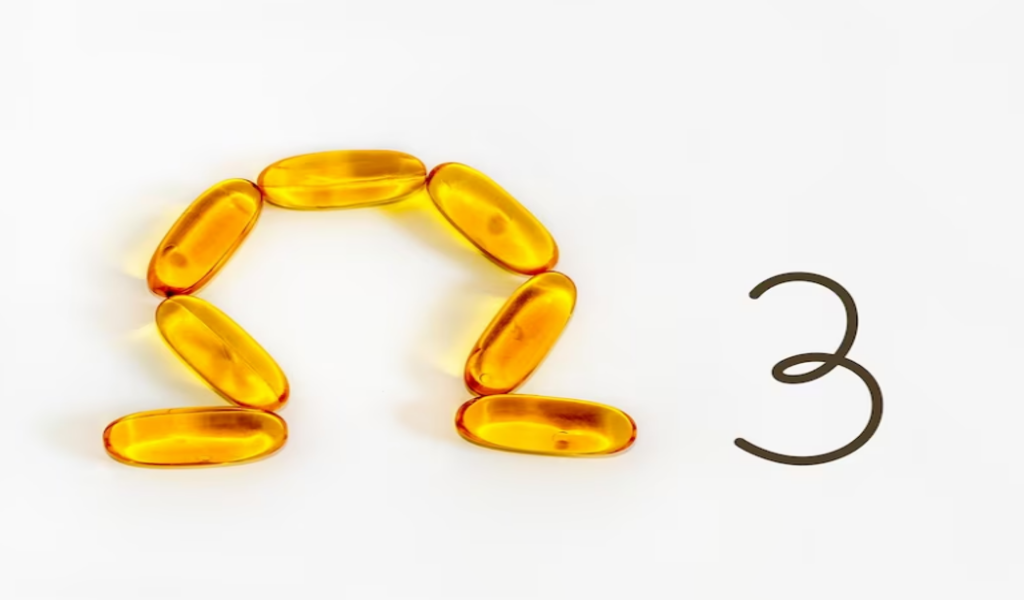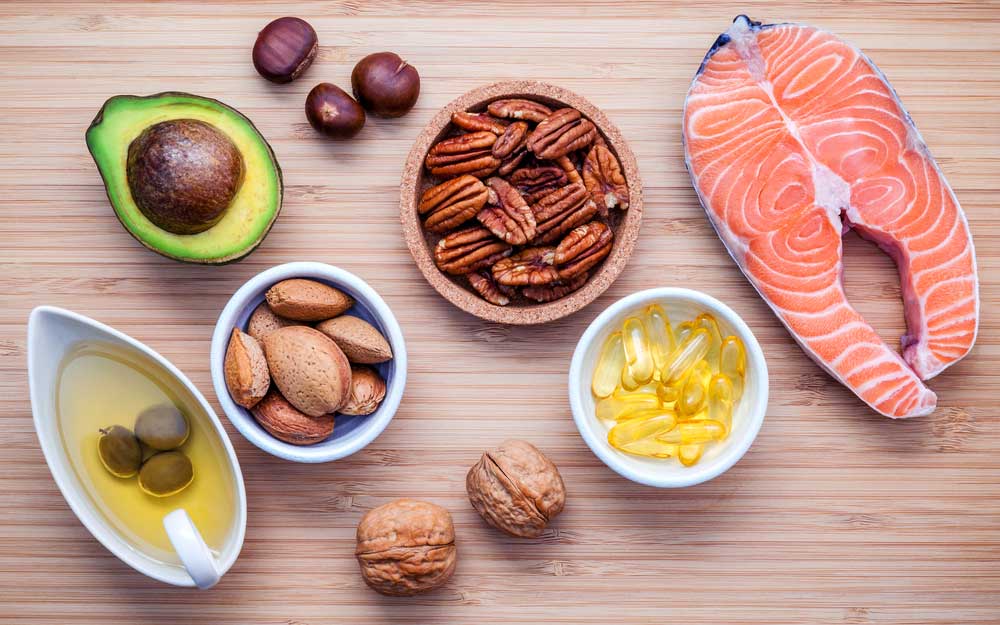Eicosapentaenoic Acid and Omega-3 Fatty Acids
Eicosapentaenoic acid (EPA) and omega-3 fatty acids have garnered significant attention in the health and nutrition world. These essential nutrients play a crucial role in maintaining overall well-being and have been linked to numerous health benefits. In this comprehensive guide, we'll explore the importance of EPA and omega-3 fatty acids, their unique properties, and how they work together to support optimal health.
Understanding the Role of Omega-3 in Nutrition
Omega-3 fatty acids are polyunsaturated fats that are essential for human health. These nutrients are considered "essential" because our bodies cannot produce them on their own, meaning we must obtain them through diet or supplementation. The three main types of omega-3 fatty acids are:
- Alpha-linolenic acid (ALA)
- Eicosapentaenoic acid (EPA)
- Docosahexaenoic acid (DHA)
Omega-3 fatty acids are vital for various bodily functions, including:
- Cell membrane formation and function
- Brain development and cognitive function
- Cardiovascular health
- Inflammation regulation
- Eye health
The human body can convert ALA (alpha-linolenic acid) into EPA (eicosapentaenoic acid) and DHA (docosahexaenoic acid), but this conversion process is inefficient. Therefore, it is essential to obtain EPA and DHA directly from dietary sources or supplements to ensure an adequate intake.

EPA, in particular, is well-known for its powerful anti-inflammatory effects and its role in supporting cardiovascular health. Studies have shown that EPA can help reduce the risk of heart disease by lowering triglyceride levels, improving blood circulation, and enhancing overall cardiovascular function. Regular consumption of EPA-rich foods or supplements may also help maintain healthy cholesterol levels, reduce inflammation in blood vessels, and promote heart health. Given these benefits, ensuring sufficient Vagen EPA intake is vital for maintaining optimal cardiovascular health and preventing chronic conditions.
How EPA Differs from DHA?
While EPA and DHA are both long-chain omega-3 fatty acids, they have distinct roles and benefits in the body. Understanding these differences can help you make informed decisions about your omega-3 intake:
EPA (Eicosapentaenoic Acid)
- Primarily found in fatty fish and algae
- Potent anti-inflammatory properties
- Supports cardiovascular health
- May help reduce symptoms of depression and anxiety
- Beneficial for skin health and conditions like psoriasis
DHA (Docosahexaenoic Acid)
- Also found in fatty fish and algae
- Critical for brain development and function
- Important for eye health and visual acuity
- Supports fetal development during pregnancy
- May improve cognitive performance in older adults
Both EPA and DHA provide various health benefits, but their unique properties make them particularly effective for different areas. Vagen EPA’s strong anti-inflammatory effects are especially beneficial for cardiovascular health and managing inflammatory conditions. In contrast, DHA plays a vital role in brain and eye health, supporting cognitive function and visual development. While both are important, their specific benefits highlight the need for a balanced intake of both EPA and DHA to support overall well-being.

Combining EPA and DHA for Maximum Benefits
While EPA and DHA have distinct roles, they often work synergistically to promote overall health. Many experts recommend consuming both EPA and DHA to maximize their potential benefits. Here are some ways to ensure you're getting an adequate balance of these essential fatty acids:
1. Dietary Sources
Fatty fish are the primary dietary source of both EPA and DHA. Some of the best options include:
- Salmon
- Mackerel
- Sardines
- Anchovies
- Herring
2. Supplementation
For those who don't consume enough fatty fish or prefer a vegetarian option, supplements can be an effective way to boost EPA and DHA intake. Options include:
- Fish oil supplements
- Krill oil supplements
- Algal oil supplements (suitable for vegetarians and vegans)
When selecting a supplement, choose products that offer both EPA and DHA in a balanced ratio. Many experts recommend a ratio of 1:1 to 2:1 (EPA to DHA) for optimal health benefits. This balanced intake helps maximize the anti-inflammatory and cardiovascular benefits of EPA, while also supporting cognitive function and eye health through DHA. Look for supplements that provide this ratio to ensure you're getting the most effective combination of these essential fatty acids.

Incorporating EPA and DHA into Your Diet
To ensure you're getting a good balance of EPA and DHA, consider the following strategies:
- Include fatty fish in your meals at least twice a week
- Use algae-based cooking oils rich in omega-3s
- Add ground flaxseeds or chia seeds to smoothies or yogurt for a plant-based ALA boost
- Consider a high-quality omega-3 supplement if you struggle to meet your needs through diet alone
By incorporating both dietary sources and supplements as needed, you can achieve an optimal balance of EPA and DHA to support your overall health and well-being. This approach ensures you’re getting the right amounts of these essential fatty acids, promoting cardiovascular health, cognitive function, and overall vitality.

Conclusion
Eicosapentaenoic acid (EPA) and omega-3 fatty acids are essential nutrients that play crucial roles in maintaining optimal health. By understanding the unique properties of EPA and DHA and how they work together, you can make informed decisions about your omega-3 intake and potentially improve various aspects of your health.
Whether through dietary sources or supplementation, ensuring adequate intake of both EPA and DHA can contribute to better cardiovascular health, cognitive function, and overall well-being. As with any dietary changes or supplement regimens, it's always best to consult with a healthcare professional to determine the best approach for your individual needs.
For more information on natural plant extracts and innovative solutions for the food and health industries, please contact Yangge Biotech Co., Ltd. at info@yanggebiotech.com. Our team of experts is dedicated to providing high-quality, research-backed ingredients to support your health and wellness goals.
References
1. Simopoulos, A. P. (2002). The importance of the ratio of omega-6/omega-3 essential fatty acids. Biomedicine & Pharmacotherapy, 56(8), 365-379.
2. Calder, P. C. (2013). Omega‐3 polyunsaturated fatty acids and inflammatory processes: nutrition or pharmacology? British Journal of Clinical Pharmacology, 75(3), 645-662.
3. Swanson, D., Block, R., & Mousa, S. A. (2012). Omega-3 fatty acids EPA and DHA: health benefits throughout life. Advances in Nutrition, 3(1), 1-7.
4. Innis, S. M. (2008). Dietary omega 3 fatty acids and the developing brain. Brain Research, 1237, 35-43.
5. Lee, J. H., O'Keefe, J. H., Lavie, C. J., & Harris, W. S. (2009). Omega-3 fatty acids: cardiovascular benefits, sources and sustainability. Nature Reviews Cardiology, 6(12), 753-758.
Send Inquiry
Related Industry Knowledge
- Mung Bean Protein Peptide: A Natural Powerhouse of Health Benefits
- Discover the Benefits of Blue Spirulina E10
- Benefits of Rhodiola Rosea
- Laminaria Digitata Extract in Acne Treatment and Skin Care
- Bovine Collagen Peptides: Benefits, Uses You Should Know
- Creatine Tablets: Monohydrate, Pure, and Vegan
- Vegan Omega 3 Supplements: The Best Vitamin
- Organic Green Kale Powder: Why It’s a Must-Have for Health-Conscious Living
- Purple corn extract powder made in china
- how to use beetroot powder for skin whitening


